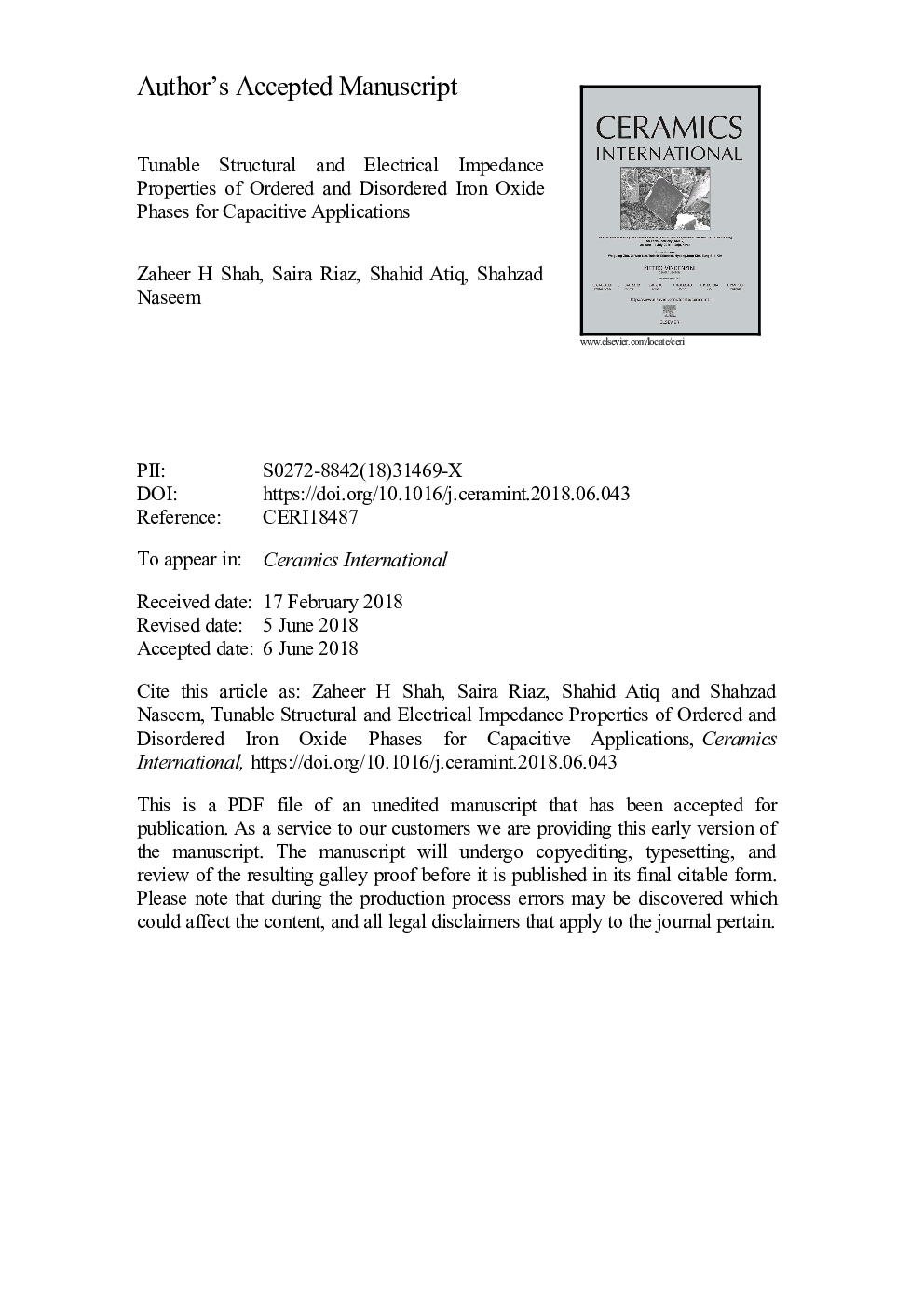| Article ID | Journal | Published Year | Pages | File Type |
|---|---|---|---|---|
| 7885861 | Ceramics International | 2018 | 27 Pages |
Abstract
Having extensive knowledge of room temperature and temperature dependent dielectric and impedance properties of iron oxide nanostructures will help in extending the field of application from biomedical sciences to microelectronics industry. This aspect of iron oxide has long been neglected and the attention is mostly focused on magnetic investigations. To explore and extend the field of application of iron oxide this study is focused on detailed investigation of structural as well as temperature dependent (30-210â¯Â°C) dielectric along with impedance analysis. Iron oxide nanostructures are prepared using template free oleic acid assisted sol-gel method with variation in molarity of the finally synthesized sol in the range of 0.2-2.0â¯mM (interval 0.2â¯mM). Magnetite (Fe3O4) phase is observed at molarity of 0.2â¯mM whereas, vacancy ordered and disordered maghemite (γ-Fe2O3) phases are observed at molarities of 0.8-1.0â¯mM and 1.4-2.0â¯mM, respectively. Dielectric constant of 104.6, 74.5 and 98.43 (log f = 5.0) is observed at molarities of 0.2â¯mM, 1.0â¯mM and 2.0â¯mM for Fe3O4 and vacancy ordered (Vo) & disordered (Vd) γ-Fe2O3 phase, respectively. Zview software is used for the fitting of Nyquist plots. Fitted data reveals that dielectric constant strongly depends on grain boundary resistance (Rgb). Activation energy of 0.25â¯eV and 0.296â¯eV (log f = 5) is observed for Fe3O4 and Vd γ-Fe2O3 phase at 0.2â¯mM and 2.0â¯mM molarity of the final iron oxide sol.
Keywords
Related Topics
Physical Sciences and Engineering
Materials Science
Ceramics and Composites
Authors
Zaheer H. Shah, Saira Riaz, Shahid Atiq, Shahzad Naseem,
